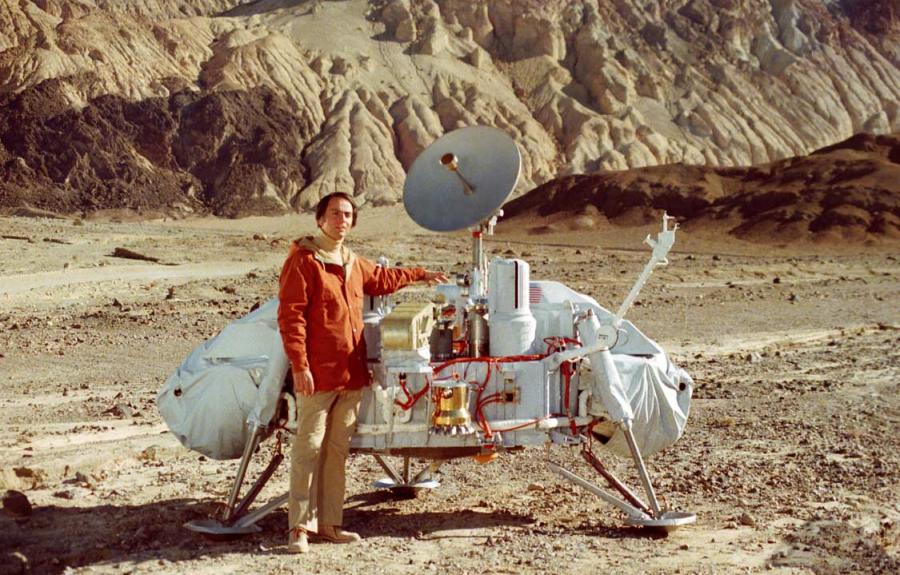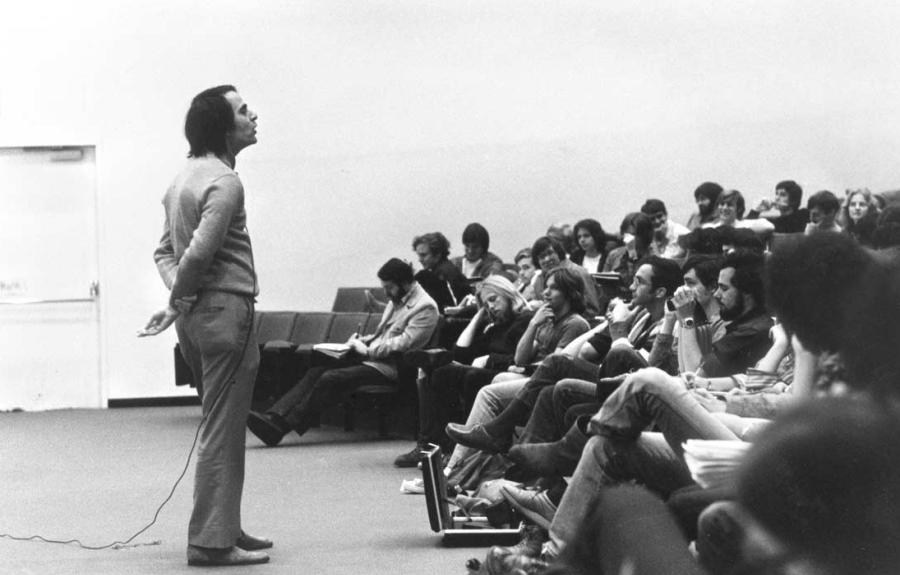When we explore other worlds, what once seemed the only way a planet could be turns out to be somewhere in the middle range of a vast spectrum of possibilities…
― Carl Sagan, Pale Blue Dot: A Vision of the Human Future in Space
Mission Statement
The Carl Sagan Institute (CSI) was founded to find life in the universe. Based on the pioneering work of Carl Sagan at Cornell, our interdisciplinary team is developing the forensic toolkit to find life in the universe, inside the Solar System and outside of it, on planets and moons orbiting other stars.
Recent scientific results show that in our galaxy alone there are billions of planets orbiting other suns. After billions of years of evolution on our own Pale Blue Dot and thousands of years of questioning, we finally have the technology in hand to explore other worlds inside and outside of our solar system. The information generated by the search for signs of life on other worlds also helps us understand and safeguard our own planet — our Pale Blue Dot — better.
CSI for the search of life in the universe: CSI explores factors that determine if a planet or moon can host life and how we could find it by bringing together experts from a wide range of disciplines, from sciences, engineering to media who work together with some of the planet’s most talented students at the undergraduate, graduate and postdoctoral level. CSI researchers use the latest data from space telescopes, probes to the solar system’s diverse worlds, field and satellite data on our home planet, laboratory studies of terrestrial organisms, and modeling of complex processes from the astronomical to the biological to explore these profound questions. And CSI researchers participate in the development of the next generation of space- and Earth-based facilities to probe ever deeper and farther.
CSI also interprets these results for the widest possible audience, sharing the fascination of science with everyone who is interested in where humankind stands in the quest to understand our place in the cosmos.
History of CSI
The Carl Sagan Institute was founded in 2015 at Cornell University to find life in the universe and explore other worlds – how they form, evolve and if they could harbor life both inside and outside of our own Solar System. Directed by astronomer Lisa Kaltenegger, the Institute has built an entirely new research group, spanning 14 departments at Cornell and including more than 25 faculty who focus on a wide range of the search for life in the universe interdisciplinarily.
The research group is embedded in a rich environment of established international interdisciplinary cooperation at Cornell. The Institute’s collaboration brings together researchers from fields as far apart as astrophysics, engineering, earth and atmospheric science, geology and biology to tackle questions as diverse as those about the astronomical context of the emergence of life on Earth, how to find it and what this discovery would mean for humankind.


